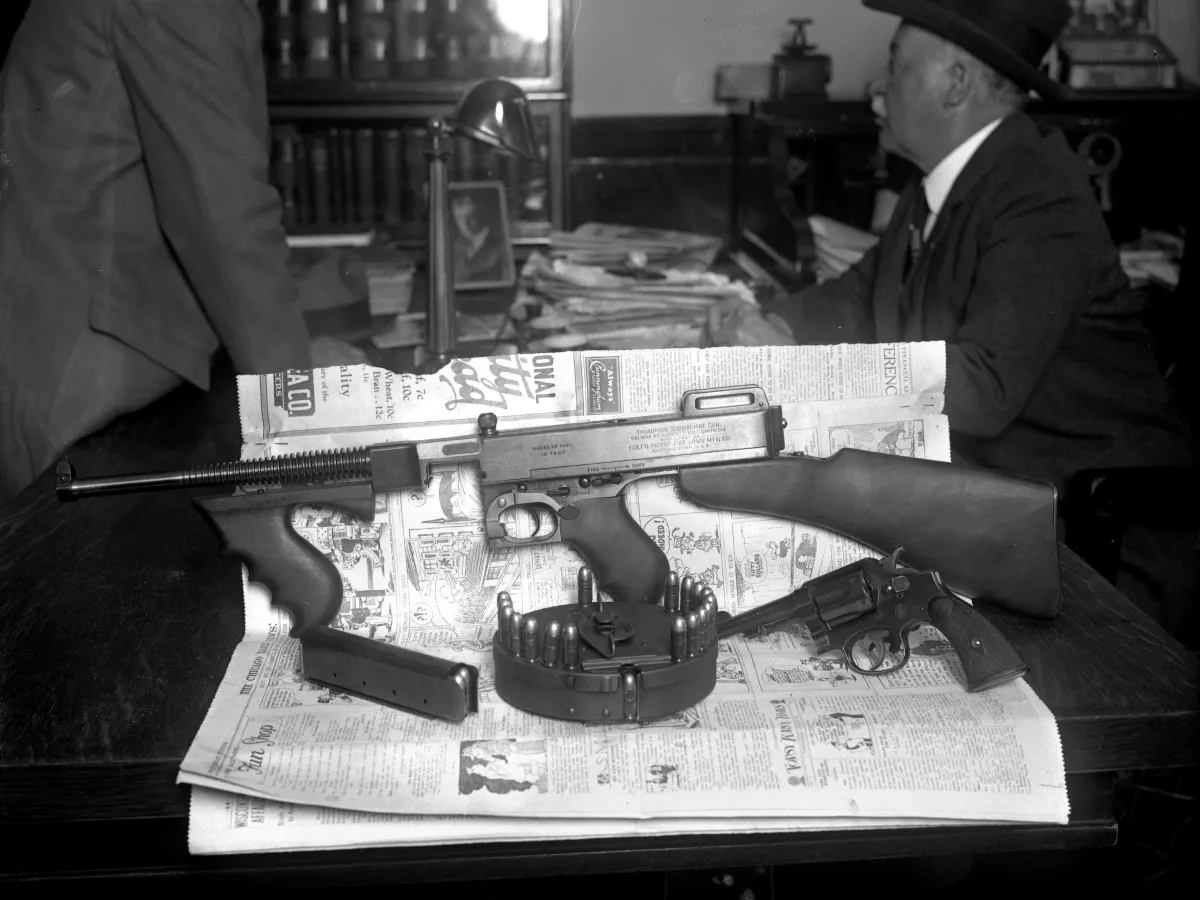The phrase ‘Chicago Typewriter’ emerged in the 1920s and 1930s during the height of Prohibition-era crime in the United States. It was a slang term for the Thompson submachine gun, a rapid-firing firearm that revolutionized both law enforcement and organized crime.


The nickname reflected the gun’s staccato bursts of fire, which resembled the clattering rhythm of a typewriter’s keys. Chicago, then notorious as a battleground between rival gangs, became inseparable from the weapon’s image.
The Thompson had been developed after World War I as a compact, automatic firearm that could provide soldiers with mobile firepower. However, it found little use in the military until later conflicts. Instead, its availability on the civilian market made it a favorite tool for bootleggers, bank robbers, and mobsters.
From gangland to pop culture
The ‘Chicago Typewriter’ became infamous in the hands of figures such as Al Capone’s Chicago Outfit, who used it in violent turf wars. One of the most notorious episodes was the 1929 St. Valentine’s Day Massacre, where Thompson guns cut down seven members of a rival gang. The event cemented the weapon’s association with Chicago’s violent underworld.
Law enforcement also adopted the Thompson, including the FBI and local police, who struggled to keep pace with heavily armed criminals. Its distinctive silhouette—with drum magazine and forward grip—soon became a visual shorthand for gangster culture in films, pulp fiction, and later television.
A lasting symbol
Though the nickname arose from crime-ridden Chicago, the ‘Chicago Typewriter’ has endured in popular culture as a symbol of Prohibition-era violence and drama. Today, it evokes both the glamour and brutality of the Jazz Age, an era when machine-gun fire became as iconic as jazz riffs and speakeasies.



Leave a Reply